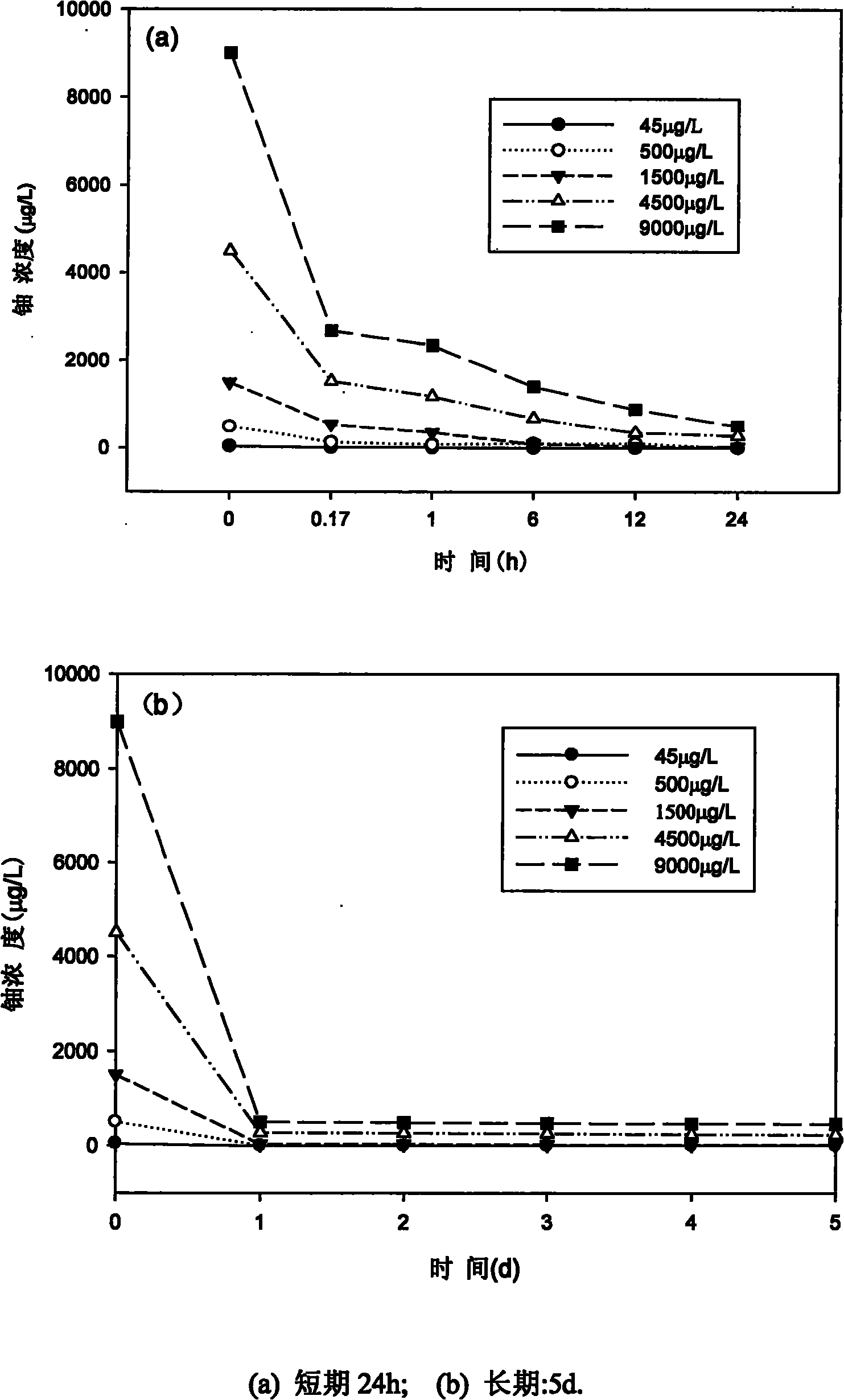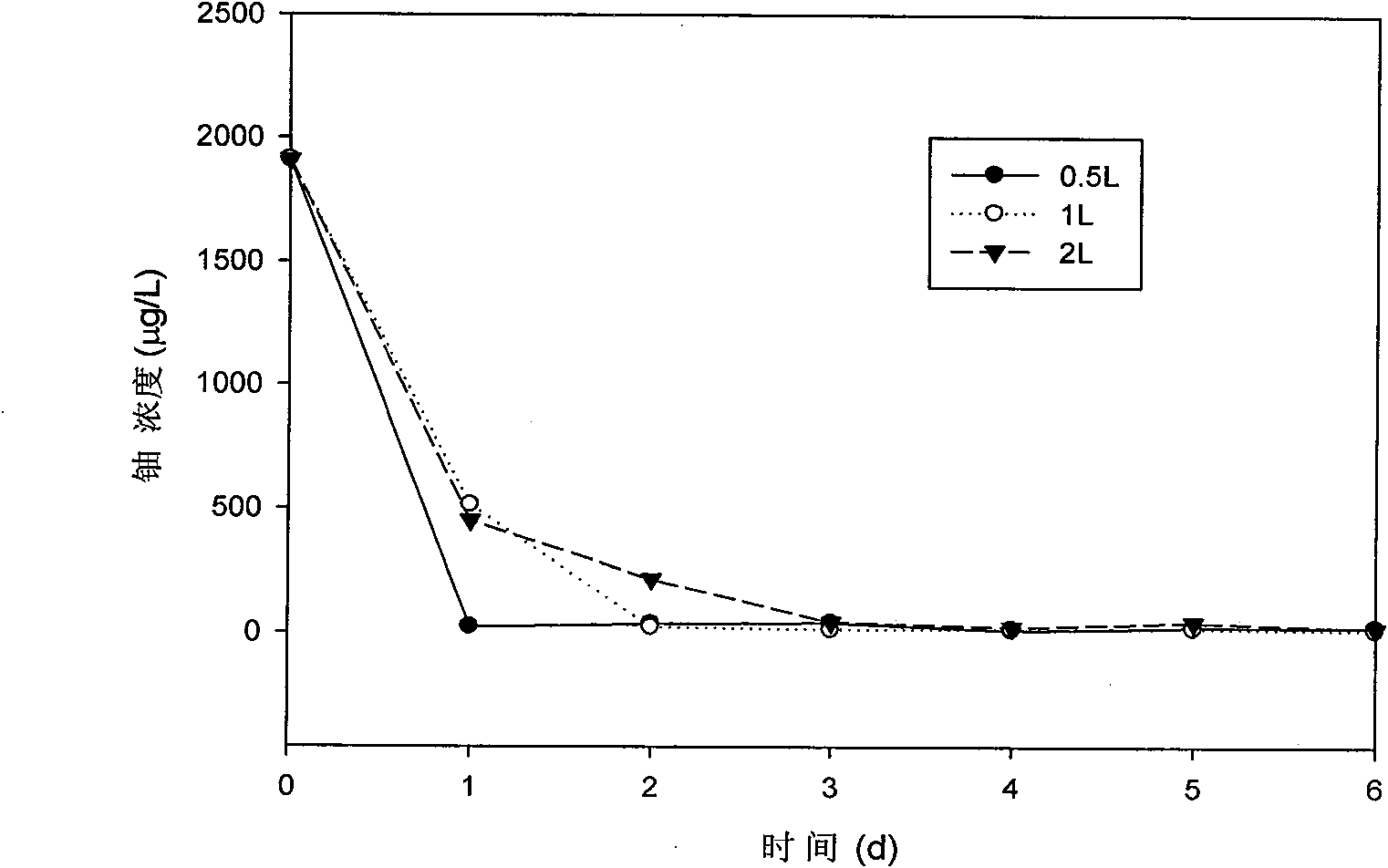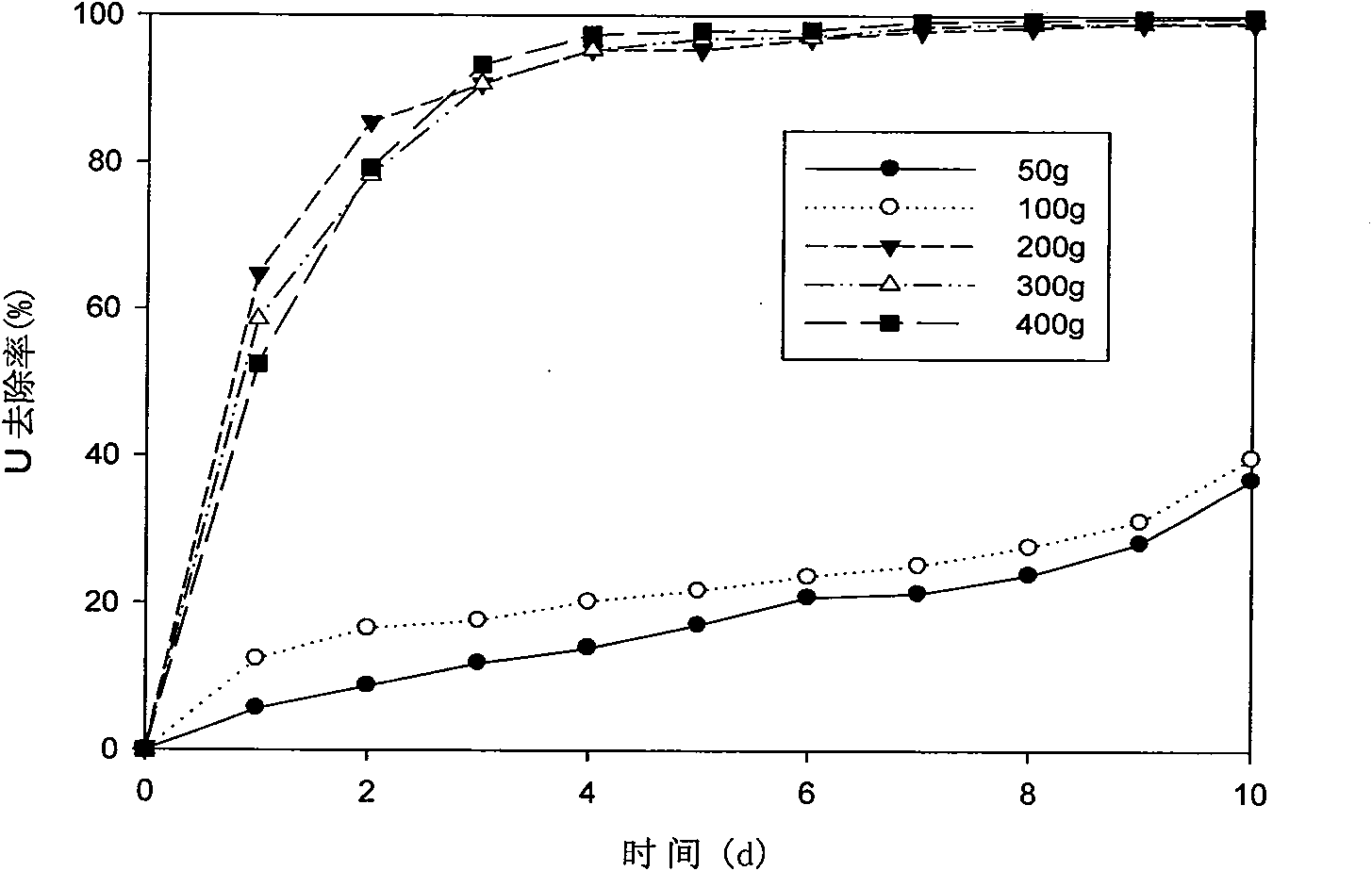Plant restoration method for uranium polluted water
A technology for phytoremediation and uranium pollution, which is applied in the field of radioactive pollution control to achieve good feed value, well-developed root system, and environmental safety.
- Summary
- Abstract
- Description
- Claims
- Application Information
AI Technical Summary
Problems solved by technology
Method used
Image
Examples
Embodiment 1
[0036] Uranium-contaminated water body A to be repaired: obtained by diluting 1g / L uranium standard solution with distilled water, simulating uranium-contaminated water body, adjusting pH=6.0 and ensuring that uranium in the water body does not precipitate, referred to as water body A.
[0037]In the laboratory, the day and night temperature is between 30°C-20°C, and the relative humidity is 60-80%. Add 2L of water body A with different treatment concentrations into a 2L beaker, and then add a plant one by one with a fresh weight of about 400g. Big hemp. Five treatments were set in the experiment: the concentration of uranium = 45 (CK), 500, 1500, 4500, and 9000 μg / L respectively, and the pH was adjusted to about 6.5 with carbonate buffer solution to ensure that no uranium in the water body A was precipitated. Each treatment has 3 repetitions. By continuously sampling and monitoring the concentration of residual uranium in the water body, the short-term 24h and long-term 5d r...
Embodiment 2
[0039] The uranium-contaminated water body B to be repaired: the initial concentration of uranium = 520 μg / L, pH = 7.80, which was taken from the overflow of an abandoned pit of a uranium mine in March 2009, referred to as water body B.
[0040] Add 100g, 200g, and 400g of scallions with a biomass of about 100g per plant to a group of water body B whose volume is 5L, which is an ordinary plastic pot and D=30cm. Regularly aerate for 5 minutes every day, sample and analyze every day, and monitor continuously for 5 days. The results showed that after 5 days, the average uranium content in leaves and roots of S. chinensis were 37.86±6.52μg / g and 1015.63±15.62μg / g, respectively. After adding 100g, 200g, and 400g of fenugreek, the average concentration of uranium in 5L of water body B was 130±25μg / L, 43±6μg / L, and 21±4μg / L, reaching the nuclear industry standard, national wastewater discharge standard, drinking water standards.
Embodiment 3
[0042] The uranium-contaminated water body C to be repaired: the initial concentration of uranium = 2100 μg / L, pH = 7.63, which was taken from a uranium mine pit water in April 2009, referred to as water body C.
[0043] To the water body C of a group of 5L beakers with 5L containers and the water body C of a group of 10L containers with rectangular parallelepiped water tanks, add a number of small plants with a biomass of 50% of each small plant and large scallion with a coverage area of 50%; aerate regularly for 5 minutes every day , sampling analysis after 20 days, the results showed that: the uranium content in leaves and root system of the scallop in 5L water body were 144.37, 4693.15μg / g respectively; 3649.52μg / g; the residual uranium concentrations in 5L and 10L water bodies were 771 and 360μg / L, respectively.
PUM
 Login to View More
Login to View More Abstract
Description
Claims
Application Information
 Login to View More
Login to View More - R&D
- Intellectual Property
- Life Sciences
- Materials
- Tech Scout
- Unparalleled Data Quality
- Higher Quality Content
- 60% Fewer Hallucinations
Browse by: Latest US Patents, China's latest patents, Technical Efficacy Thesaurus, Application Domain, Technology Topic, Popular Technical Reports.
© 2025 PatSnap. All rights reserved.Legal|Privacy policy|Modern Slavery Act Transparency Statement|Sitemap|About US| Contact US: help@patsnap.com



